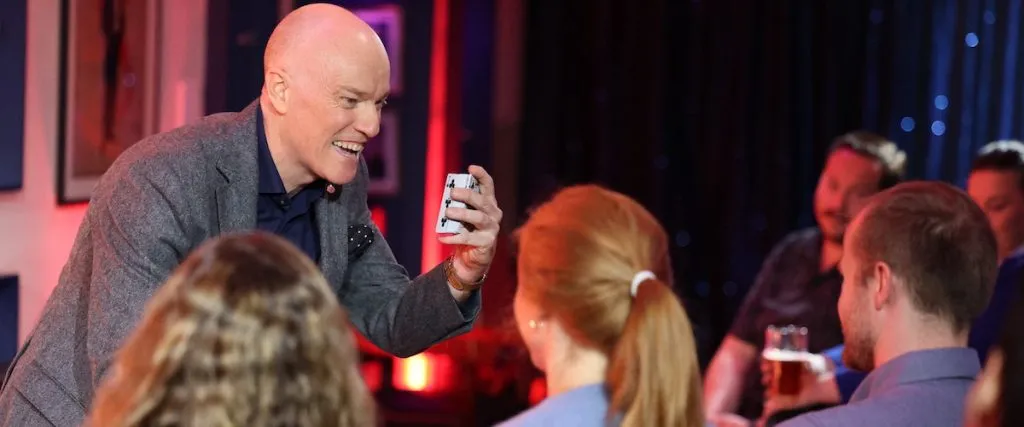
Magic shows have captivated audiences for centuries, weaving an irresistible blend of mystery, artistry, and human ingenuity. These performances transcend mere tricks, offering a glimpse into the extraordinary by skillfully bending reality, challenging perception, and igniting a sense of childlike wonder. Whether staged in grand theaters or performed in intimate gatherings, magic shows continue to enthrall diverse audiences, uniting them through a shared experience of astonishment and delight. The enduring appeal of magic lies not only in the illusions themselves but also in the artistry of the magician and the timeless human fascination with the unknown.
At the heart of every magic show is a delicate balance between concealment and revelation. Magicians masterfully manipulate attention, employing misdirection, sleight of hand, and psychological subtlety to craft illusions that defy explanation. This intricate dance between what is seen and what remains hidden invites viewers into a world where ordinary objects behave in extraordinary ways. A simple card, a coin, or a ribbon becomes a conduit for wonder, transformed by skill and showmanship into symbols of the impossible. The magician’s craft is thus a profound exercise in storytelling, where each illusion builds suspense, surprise, and ultimately, joy.
The origins of magic shows are as rich and varied as the cultures that have embraced them. Ancient Egyptian priests, Chinese conjurers, and medieval court entertainers all contributed to the foundations of magical performance. Over time, magic evolved from mystical rites and folk traditions into a refined theatrical art form. The 19th century witnessed the rise of legendary figures like Jean Eugène Robert-Houdin, often called the father of modern magic, who introduced elegance, narrative, and technological innovation to his performances. This era laid the groundwork for the spectacular illusions and grand stage productions that define magic shows today.
What makes a magic show truly exceptional, however, extends beyond technical prowess. The magician’s charisma, timing, and connection with the audience are paramount. A skilled performer understands that the magic lies as much in the emotional journey as in the mechanics of the trick. The laughter, gasps, and moments of silent awe that ripple through the crowd create a collective atmosphere of enchantment. This shared emotional experience is central to the art form’s enduring allure. It transforms spectators into willing participants in an ephemeral world where the impossible feels tangible.
In contemporary times, magic shows have expanded their reach and style, blending tradition with innovation to appeal to new generations. Television specials, stage spectacles, and street performances coexist, each offering a unique flavor of magic. The rise of digital technology has both challenged and inspired magicians, who integrate multimedia effects while preserving the intimate human connection fundamental to the craft. Social media platforms have also introduced magic to global audiences, allowing performers to showcase their skills instantly and inspire wonder in ways unimaginable just decades ago.
Beyond entertainment, magic shows possess a subtle power to inspire and educate. The art of illusion encourages critical thinking, inviting audiences to question perception and reality. For children especially, magic can spark creativity and curiosity, nurturing a lifelong appreciation for the extraordinary in everyday life. Moreover, many magicians use their platform to promote positive messages, employing magic to support charitable causes, foster community, and even assist in therapeutic settings. The universal language of amazement transcends barriers, making magic a unique tool for connection and empowerment.
Despite its allure, magic as an art form faces challenges in the modern age. The widespread availability of information and behind-the-scenes exposures threatens the secrecy that is integral to the craft. The magician’s challenge is to continually innovate and adapt, crafting fresh illusions that surprise and captivate. This often requires blending classical techniques with contemporary storytelling and technology. Furthermore, the ethics of magic—particularly regarding consent and respect for the audience—remain a vital consideration, as the relationship between magician and spectator is built on trust and shared wonder.
Ultimately, the magic show is a celebration of imagination’s limitless potential. It invites us to momentarily suspend disbelief and embrace the possibility that the world is more mysterious and enchanting than it appears. In an era dominated by rationality and scientific explanation, magic preserves a space for mystery, reminding us that some experiences resist easy understanding and that wonder remains essential to the human spirit. Through dazzling illusions and heartfelt performance, magic shows kindle a sense of possibility that lingers long after the final bow.
In conclusion, the world of magic shows is a timeless tapestry of artistry, psychology, and cultural tradition. Its power lies not only in the tricks performed but in the shared emotional voyage between magician and audience. As technology and creativity continue to evolve, so too will the magic show, enchanting new generations and preserving its vital role as a source of joy, wonder, and inspiration. To witness a magic show is to glimpse the extraordinary hidden within the ordinary—a reminder that in the realm of imagination, anything is possible.



